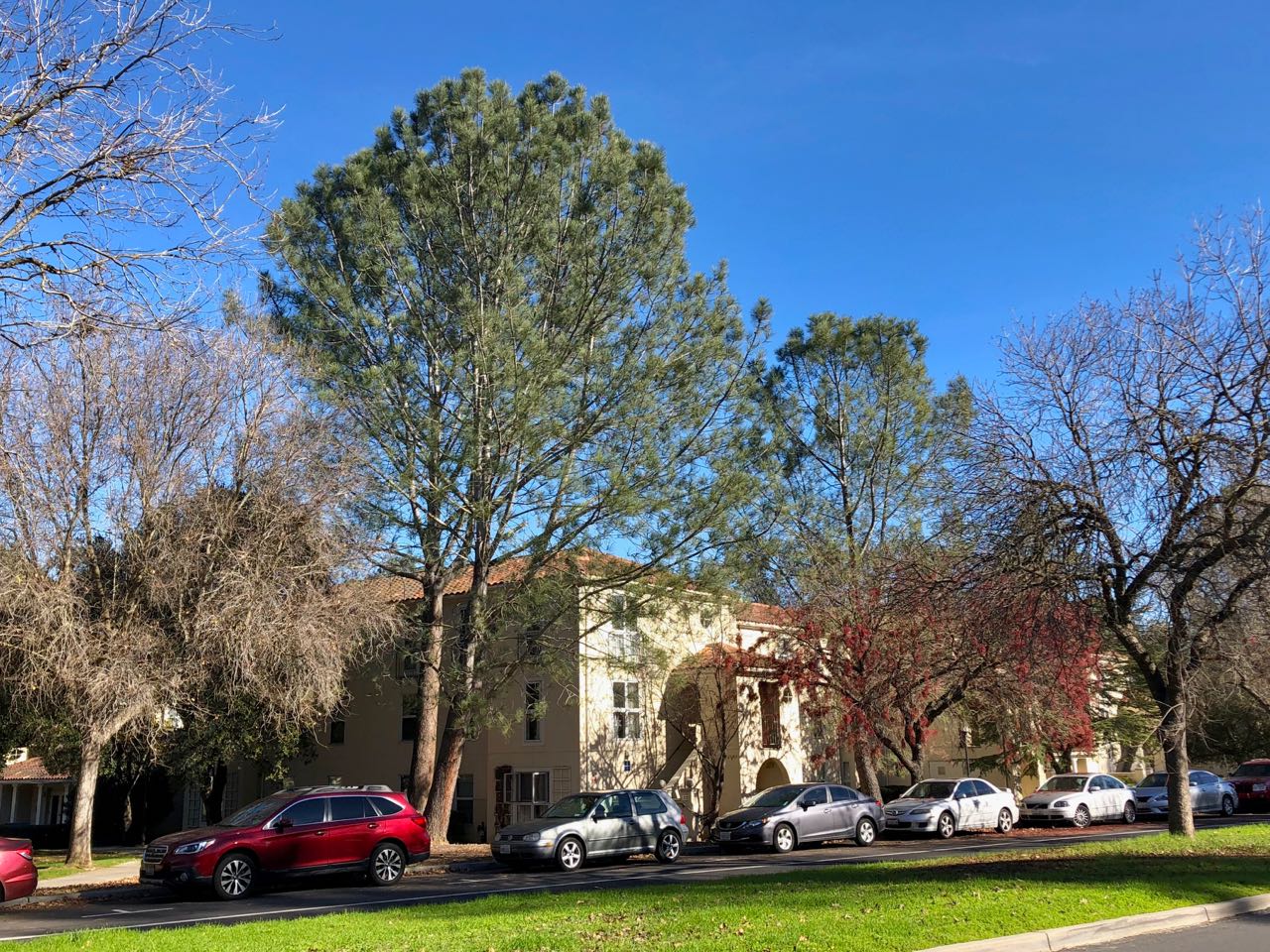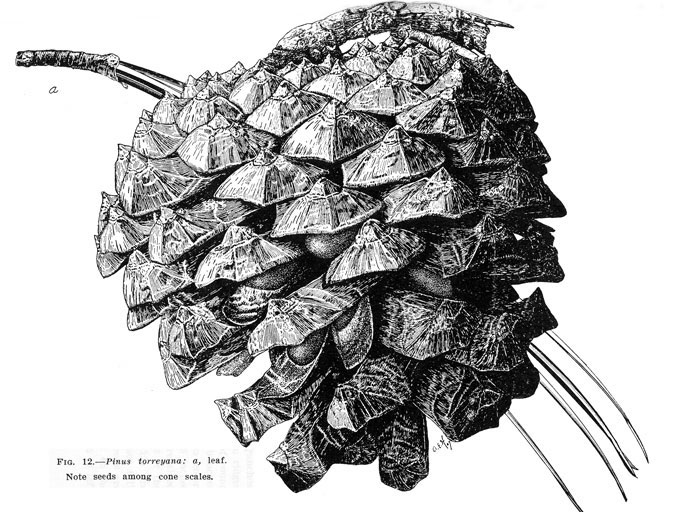Pinus torreyana
 Torrey pine
Torrey pine

The Torrey pine is native to a restricted stretch of coastal cliff at Del Mar, just north of La Jolla, plus part of Santa Rosa Island, a smaller habitat than that of any other living pine. It has five needles about 12 inches long and a 6-inch cone bearing seeds that are larger than most. The seeds are edible and can be picked up from the ground. Stanford’s specimens are northwest of the intersection of Palm Drive and Arboretum Road. One is 114 feet high and is a candidate for national champion. In its native windswept habitat the tree is contorted and barely reaches 20 feet. However, the Ward Torrey pine in Carpinteria, planted in 1894, was 100 feet high when I measured it with a surveyor’s tape and transit in the late 1960s, but in 1993 was reported at 126 feet.
One of our giants, planted in 1898, is approaching that height in 2004 and has a girth over 10 feet. Our second specimen, a short distance to the northwest, has a similar girth (map). Two dozen Torrey pines dating from 1988 can be found in groups along the Bowdoin Street frontage of Rains Houses.
· A simple key to campus pines
Name derivation: Pinus – Latin for pine; torreyana – Dr. John Torrey (1796–1873), who co-authored with Asa Gray the first Flora of North America.
About this Entry: The main text of this entry is from the book Trees of Stanford and Environs, by Ronald Bracewell, published 2005.




